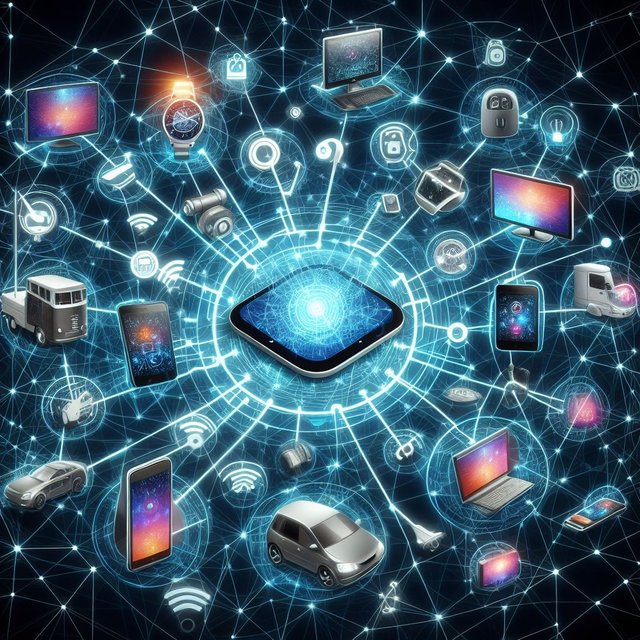Imagine a world where your refrigerator talks to your grocery store, your thermostat anticipates your temperature preferences, and your car seamlessly blends into a symphony of intelligent traffic flow. This, friends, is the world promised by the Internet of Things (IoT), a technological revolution blurring the lines between the physical and digital, weaving a web of interconnected intelligence that promises to transform every aspect of our lives.
Decoding the Jargon:
At its core, the IoT refers to the network of physical objects – things – embedded with sensors, software, and other technologies that allow them to collect, send, and act on data. These "things" range from the mundane – smart thermostats and connected appliances – to the industrial – factory robots and intelligent sensors monitoring critical infrastructure.
Imagine tiny tongues of data constantly flowing from these devices, whispering tales of temperature, pressure, location, and more. This data is then processed, analyzed, and used to trigger actions – your thermostat adjusting the temperature based on your presence, your refrigerator ordering groceries when stocks run low, or your car optimizing its route based on real-time traffic data.
The Pillars of the Revolution:
This intricate dance of data and action rests on several key pillars:
Connectivity: Devices communicate with each other and the cloud through diverse channels – Wi-Fi, Bluetooth, cellular networks, and low-power wide-area networks (LPWANs).
Sensors and Actuators: Sensors gather data about the physical world, while actuators translate digital commands into physical actions.
Software and Platforms: The brains behind the operation, software platforms collect, analyze, and manage the data flow, facilitating communication and triggering actions.
Security and Privacy: Protecting sensitive data and ensuring device integrity are paramount concerns, demanding robust security measures and ethical data governance practices.
Beyond the Hype: Applications Redefining Reality:
The IoT's reach extends far beyond the realm of home automation and wearables. Its potential to revolutionize diverse sectors is staggering:
Industry: Imagine factories where machines optimize production in real-time, predictive maintenance preventing downtime, and intelligent supply chains ensuring seamless flow of materials.
Healthcare: Remote patient monitoring, personalized treatment plans, and real-time disease tracking are just a glimpse into the future of healthcare empowered by the IoT.
Smart Cities: Traffic management systems that adapt to real-time flow, waste collection optimized for efficiency, and intelligent infrastructure monitoring – these are the cornerstones of smarter, more sustainable cities.
Agriculture: Precision agriculture utilizes sensors and automation to optimize water usage, monitor soil health, and improve crop yields.
Environmental Monitoring: Real-time data on air quality, water pollution, and climate change empowers informed decision-making and sustainable practices.
Challenges and Concerns:
As with any transformative technology, the IoT presents challenges that need careful consideration:
Security and Privacy: Protecting sensitive data from cyberattacks and ensuring responsible data handling are crucial concerns.
Interoperability: The lack of standardized protocols can create communication silos and hinder the full potential of the IoT.
Ethical Considerations: Issues like data ownership, algorithmic bias, and the potential for social inequality need thoughtful solutions.
Digital Divide: Ensuring equitable access to the benefits of the IoT is crucial for building a truly inclusive future.
The Road Ahead: Embrace the Connected Future:
The Internet of Things is not just a technological trend; it's a cultural shift, a reshaping of how we interact with the world around us. As we navigate this connected future, the key lies in embracing its potential with a critical eye, addressing its challenges head-on, and ensuring that its benefits reach every corner of society. This is not a revolution of machines replacing humans, but a collaboration between the two, paving the way for a more efficient, sustainable, and ultimately, a better future.
